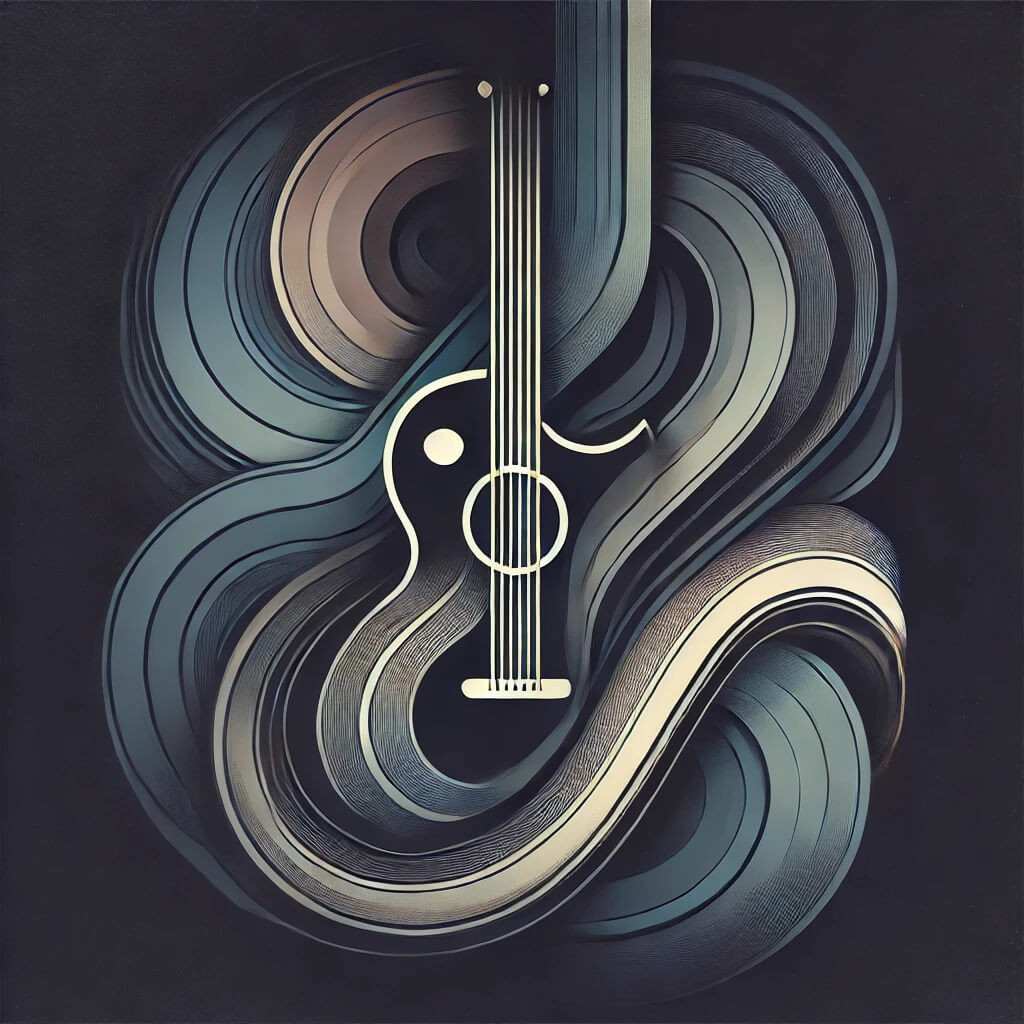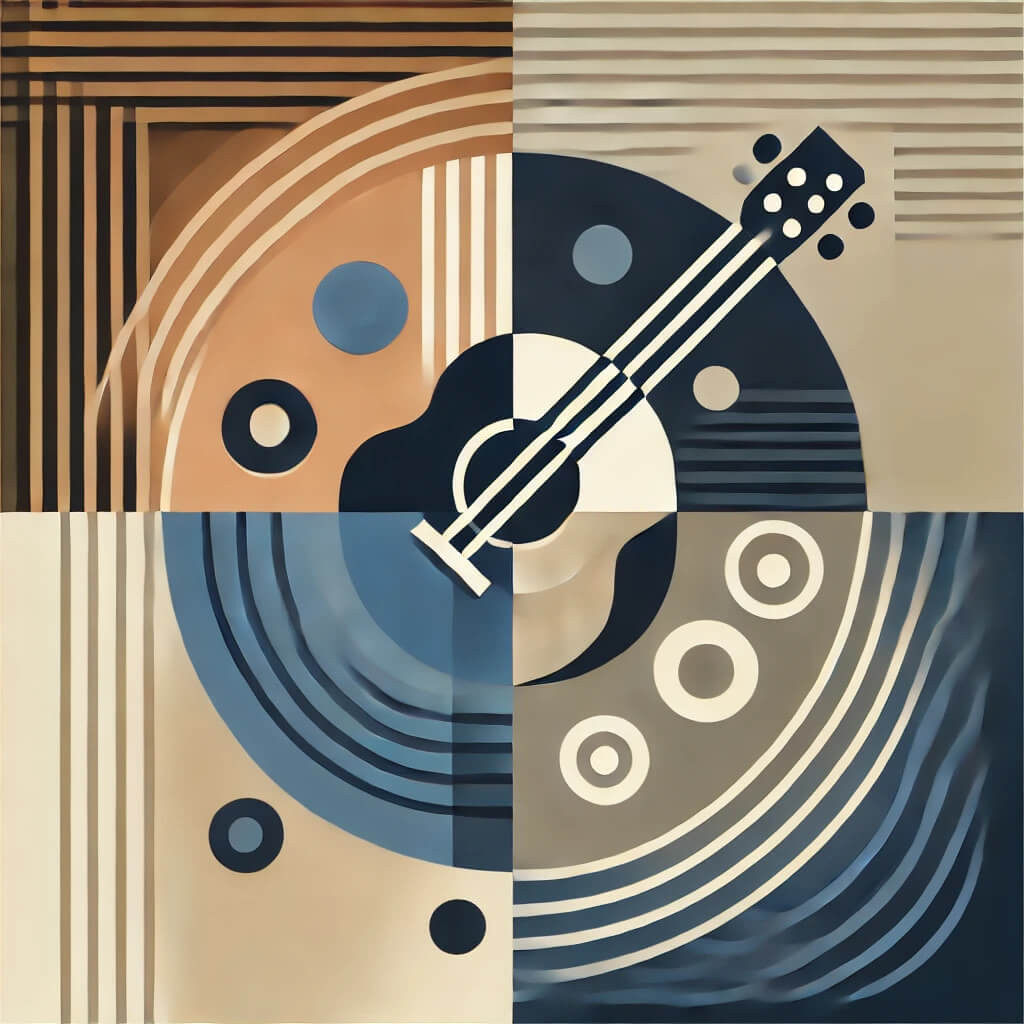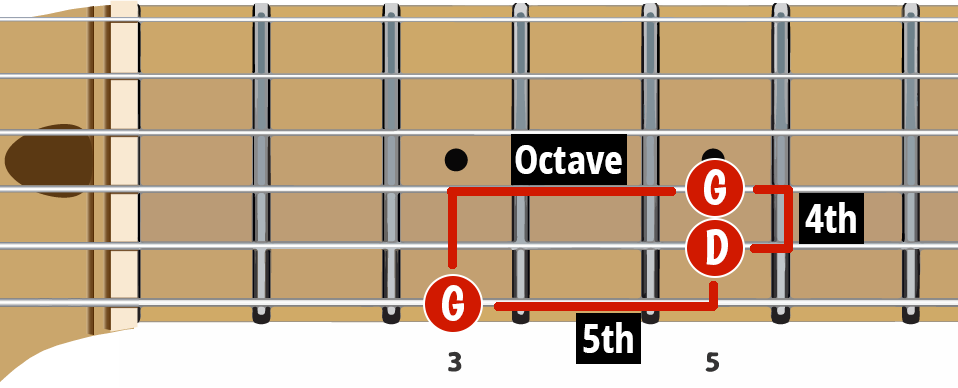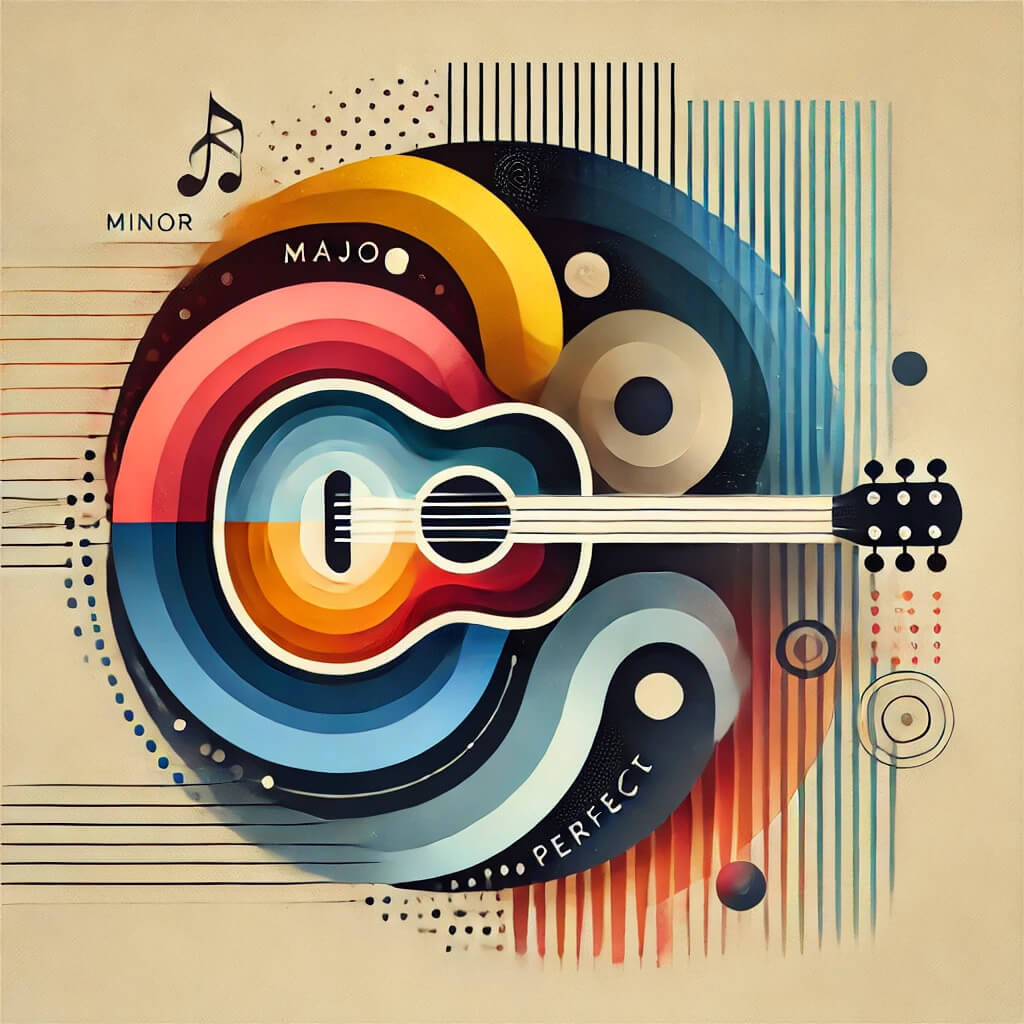A Simple Guide to Guitar Intervals and How To Quickly Learn Them
By Carvel Avis in Lessons

Learning and understanding intervals on your guitar will help you grow as both a chord master AND a lead or solo guitar master. So, what are "Intervals"?
Simply put, an "Interval" name is the name given to the distance between two notes.
WHY LEARN INTERVAL NAMES AT ALL?
Why not just talk about all this in terms of whole and half steps?
Good question. Let me see if I can give you a good answer! Here you go.
Sure, the distances between notes could be explained or talked about in terms of whole and half steps. For example, a Major 2nd is really just one whole-step and a Major 3rd is really just 2 whole-steps.
So, why not just say that for goodness sake! Here's why...
Without giving it a name, the interval between the 1st and 7th notes of the major scale is 5-1/2 steps!
I don't know about you but thinking about that gives me a brain cramp. It's a lot easier to think of the distance between the 1st and 7th notes of the scale as a "Major 7th" because its the 7th note of the major scale. Doing that not only simplifies things in my mind but it helps me picture the relationship between the two notes because of where they are in the scale.
Got It? Ok, let's move on.
Interval Names Come In Three Main Flavors:
- Major Intervals
- Minor Intervals
- Perfect Intervals
Each of these interval types has a unique effect on the listener and on you as a guitarist. Understanding how and why each interval shifts emotions will help you become a more expressive and creative player.
Interval Madness Game & a Free PDF Download
The fastest (and most fun) way to learn intervals is by playing a game called, "Interval Madness". Check it out here. If you sign up for a free account, you'll also get a free PDF with chord charts showing all the Intervals you'll encounter in the game.
Major Intervals: The 2nd, 3rd, 6th, and 7th Notes of the Major Scale

Major intervals are straightforward and have a naturally bright, open sound. They are found within the major scale, which is often the first scale we learn and is considered the basis of much Western music.
- Major 2nd (M2): This interval is the distance from the first note (the root) to the second note of the major scale. For example, in the C major scale (C, D, E, F, G, A, B, C), the interval between C and D is called a major 2nd.
- Major 3rd (M3): This is the distance from the root to the third note of the scale. In C major, the interval from C to E is a major 3rd, which gives us that recognizable "happy" sound associated with major chords.
- Major 6th (M6): The major 6th is the interval between the root and the sixth note of the scale. In C major, the interval between C and A has a pleasant, uplifting quality.
- Major 7th (M7): The major 7th is the distance between the root and the seventh note of the scale. In C major, this is the interval from C to B, which creates a sense of tension, leading back to the root note.
Minor Intervals: The Flatted 2nd, 3rd, 6th, and 7th Notes

Minor intervals are closely related to their major counterparts but are slightly smaller, or "flatted" by a half-step. This small change gives them a more subdued, darker, more somber sound.
- Minor 2nd (m2): The minor 2nd is the interval between the root and a note one half-step lower than the major 2nd. For instance, in the C major scale, lowering D to Db creates a minor 2nd interval with C, which has a much more tense and dissonant feel.
- Minor 3rd (m3): Lowering the major 3rd by a half-step gives us a minor 3rd. In C major, if E is lowered to Eb, the interval between C and Eb is a minor 3rd, which is the backbone of minor chords, lending them their characteristic "somber" or "dark" sound.
- Minor 6th (m6): The minor 6th is formed by lowering the major 6th by a half-step. In C major, the interval from C to Ab creates a more introspective, mellow tone compared to the major 6th.
- Minor 7th (m7): The minor 7th is created by lowering the major 7th by a half-step. In C major, C to Bb is a minor 7th (m7). The minor 7th is the interval used in major and minor blues.
Perfect Intervals: The Unison, 4th, 5th, and Octave

Perfect intervals are in a category of their own. They include the unison (1st), 4th, 5th, and octave (8th). These intervals are called "perfect" because of their harmonic stability—they sound clear, consonant, and are often the foundation of chords and melodies.
- Perfect Unison (P1): This is the interval where both notes are the same, like C to C. It’s the most stable interval because there’s no distance between the notes. On a piano, you can't actaully play a unison interval because there's only one place to play any note. But there are many places to play a unison on guitar. In fact, you do that if you ever tune your guitar by matching the 5th fret note on one string to the open string note of the next string up, ie. 6th string, 5th fret to the open 5th string. Of course, that's the 4th fret from the 3rd to the 2nd string.
- Perfect 4th (P4): The perfect 4th is the distance from the root to the fourth note of the major scale. In C major, this would be from C to F, which has a strong, stable sound.
- Perfect 5th (P5): The perfect 5th is the distance from the root to the fifth note. In C major, C to G is a perfect 5th and is one of the most strong and stable intervals.
- Perfect Octave (P8): The octave is the interval between the root and the eighth note, essentially the same note but higher in pitch. For example, C to the next higher C is a perfect octave. Its power (as a power interval) comes from the fact that it is the same note but provides extra power as each note is a sort of reinforcement for the other one.
The Power Chord
Power chords get their name from the fact that they include 3 of the 4 power intervals! Check out the G power chord below. Notice that it includes a 5th, a 4th and an octave.

WHY MAJOR, MINOR, AND PERFECT?

Why Are They Called Major Intervals?
"Major" comes from the Latin word for "greater" or "larger." Major intervals are considered "greater" because they are wider in terms of the distance between notes. This wider spacing gives them a brighter, more open sound, which is why they often feel upbeat or positive in music.
Why Are They Called Minor Intervals?
"Minor" means "smaller" or "lesser," and that’s exactly what minor intervals are—they’re smaller by one semitone compared to their major counterparts. This subtle shift gives them a different character, often evoking a more introspective or emotional response.
Why Are They Called Perfect Intervals?
Perfect intervals are named for their pure and consonant sound. They’ve been historically considered the most stable and pleasing intervals, forming the foundation of much of Western music. Their mathematical simplicity and harmonic clarity make them feel "just right," which is why they’re labeled as perfect.
Wrapping It Up
Understanding major, minor, and perfect intervals is like getting the keys to unlock how music is structured. Major intervals bring brightness, minor intervals add depth, and perfect intervals provide stability. With these tools in hand, you can better appreciate the music you listen to or create, knowing what gives each piece its unique character.
